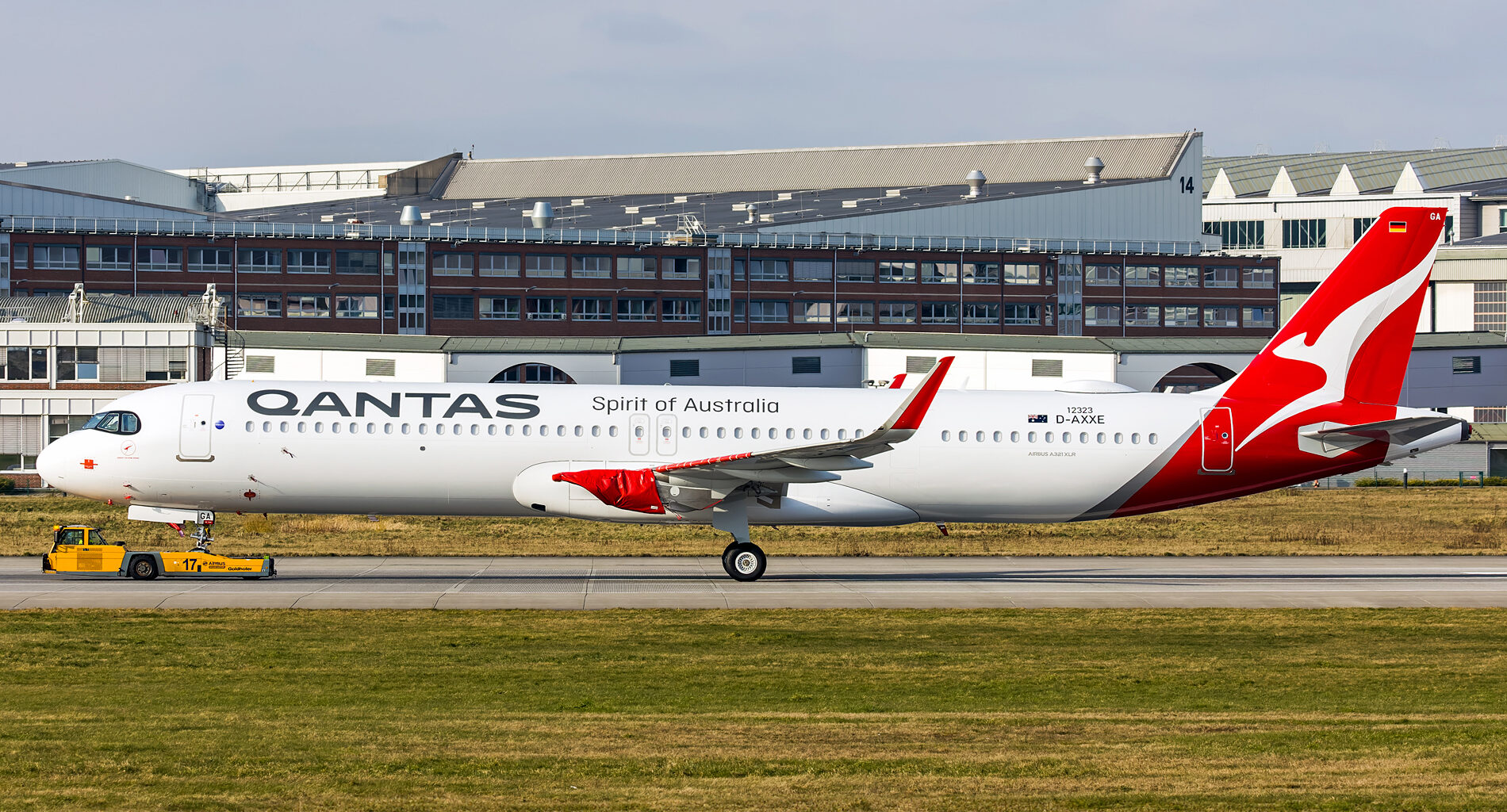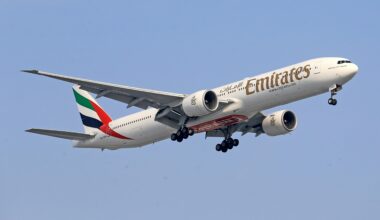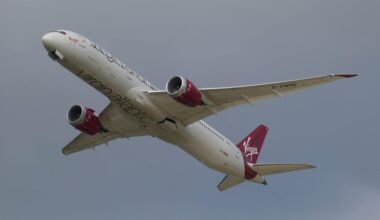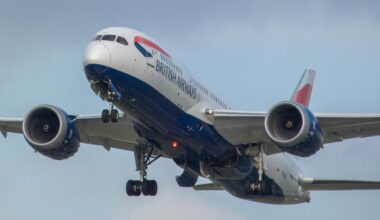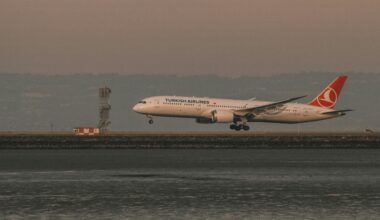For those unfamiliar with Qantas (which seems highly unlikely), they’re Australia’s flag carrier and a household name in aviation. The airline operates a vast domestic and international network with a mix of Airbus and Boeing aircraft. But now, Qantas is gearing up for a major fleet refresh, and the headline news is the arrival of its first Airbus A321XLR, which officially landed in Sydney on 2 July 2025.
In This Post
Qantas Current Fleet
Before we dive into the A321XLR, here’s what Qantas is currently flying:
- 6 Airbus A321
- 18 Airbus A330-200
- 10 Airbus A330-300
- 8 Airbus A380
- 75 Boeing 737-800
- 14 Boeing 787-9
The A321XLR’s arrival in July marks a significant shift in Qantas fleet strategy. It will eventually replace the airline’s ageing 737-800s on domestic and regional international routes.
A321XLR – A Game Changer for Qantas
Qantas CEO had this to say ahead of the aircraft’s arrival:
“Qantas will be one of the first airlines in the world to operate the A321XLR, and before the arrival of our first aircraft next year, we’ve started pilot training and finalised the details of the customer experience. Nearly half of all customers Qantas carries each year travel on our 737 fleet, so the A321XLR aircraft we’ve ordered to replace them will be significant for our future. The A321XLR is a fantastic aircraft to be part of our next-generation fleet, and its range and versatility will allow us to explore more nonstop routes and operate them cost-effectively.”
In 2019, Qantas Group purchased the Airbus A321XLR, the longest-range and largest variant within the Airbus A320 family. This aircraft maintains the same size as other A321 models while offering enhanced range, serving as an upgrade from the A321ceo (as well as the A321neo and A321LR).
The A321XLRs have been designated for both Qantas and Jetstar, with the distribution between the two airlines evolving over time. Initially, the plan was to allocate at least 20 of these planes to Qantas, but this figure has since increased to 28 aircraft.
delivery flight of the first #A321XLR for @Qantas today at Airbus Hamburg, VH-OGA named “Great Ocean Road” is now on its way to Australia via Bangkok (BKK)… pic.twitter.com/ObX5G1jYWf
— Dirk Grothe | Aviation Photography (@digro65) June 30, 2025
There is no seatback entertainment; instead, passengers can enjoy streaming options and access personal device holders. Qantas is introducing complimentary fast Wi-Fi on its A321XLRs and plans to implement this feature more broadly in the future. In terms of power accessibility, business class seats will be equipped with both USB-A and USB-C outlets, while economy class will only feature USB-C outlets.
Qantas reports a 13% boost in capacity compared to the retiring 737s, stating that there is no decrease in legroom between seats and a notable 66% rise in premium seating options.
The A321XLR features complimentary Wi-Fi and overhead storage, accommodating approximately 60% more luggage than the 737. Qantas is the inaugural airline in the Asia-Pacific to operate the aircraft, with Iberia having launched the world’s first A321XLR commercial flight in June.
The Qantas A321XLR features 197 seats, with a 2-2 business class layout similar to Aeromexico. Here’s what the cabin looks like:
- 20 Business Class seats (2-2 configuration)
- 177 Economy Class seats
This is a big deal, as the A321XLR offers significantly more range than the Boeing 737-800. This allows Qantas to expand into longer-haul regional routes, possibly opening up new direct city pairs across Australia and Southeast Asia.
What About Project Sunrise?
While the A321XLR is the big news, Qantas ambitious Project Sunrise is still moving forward. The airline has ordered 24 Airbus A350-1000s and is set to launch nonstop flights from Sydney and Melbourne to London and New York starting in mid-2026.
The A350-1000 represents the largest variant within the A350 family, showcasing exceptional economics and an impressive range. Qantas aims to elevate these capabilities even further.
The airline is leveraging all the incremental enhancements that have been introduced to this aircraft over time, including an increased maximum takeoff weight, which allows for greater fuel capacity. The Qantas A350s will also incorporate additional fuel tanks to optimise this higher-weight capacity. Moreover, with Qantas premium-heavy configuration, the airline will maintain a lighter aircraft, thereby maximising its range.
The A350-1000 will be configured with just 238 seats, including:
- 6 First Class suites
- 52 Business Class seats
- 40 Premium Economy seats
- 140 Economy seats
A key highlight of this aircraft is the introduction of a dedicated wellness zone, which aims to make ultra-long-haul travel slightly less torturous. Whether this is a revolutionary innovation or just a glorified yoga mat section remains to be seen, but I’m intrigued.
Final Thoughts
The show’s real star has finally landed. The A321XLR is set to be a game changer for Qantas’s domestic and short-haul international network. This is the airline’s biggest step yet in modernising its 737-heavy fleet, and I’m excited to see which new routes Qantas will unlock with its extended range.
And as for Project Sunrise? That’s a story for another day, but trust me, I’ll keep an eye on that wellness zone.
